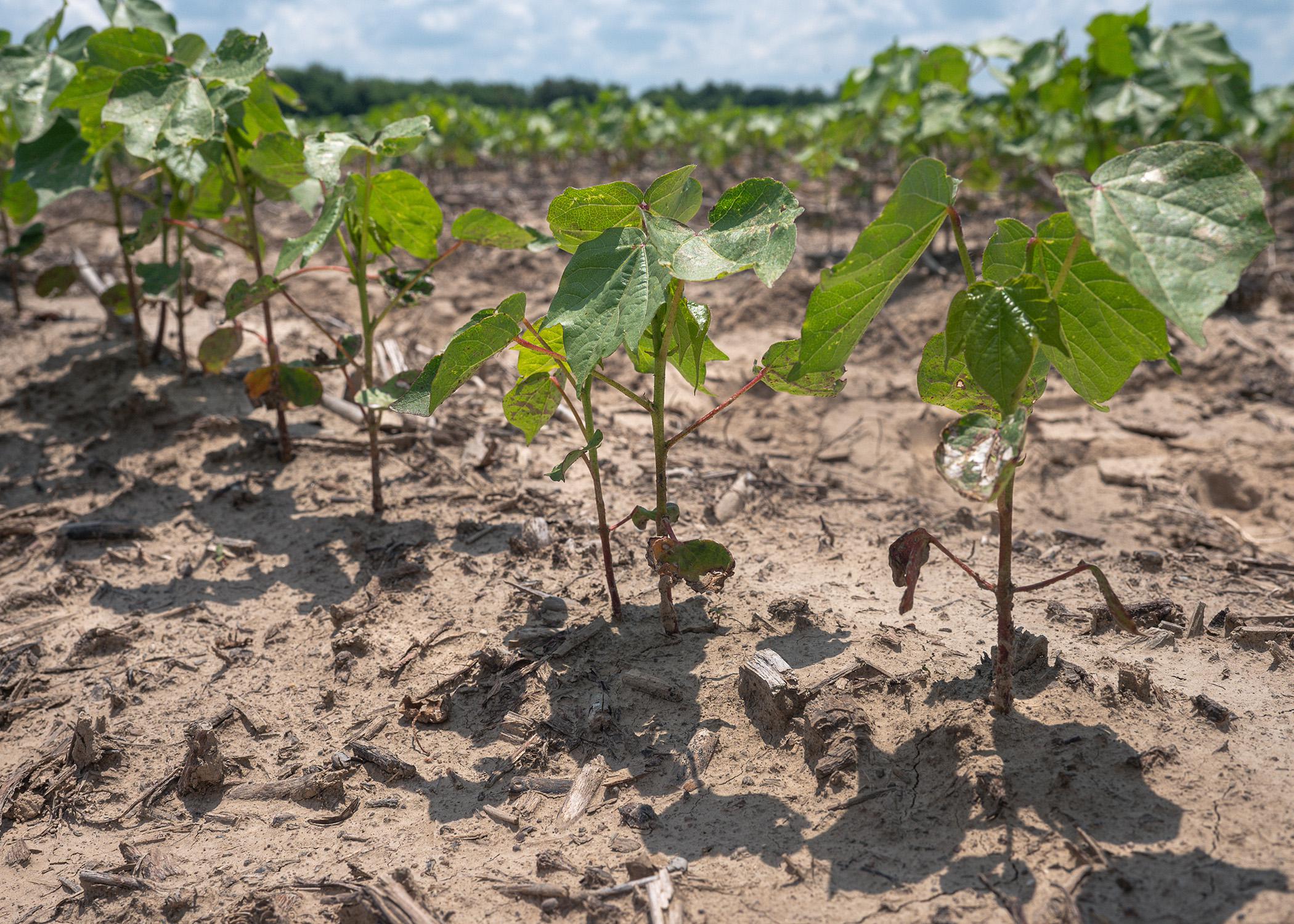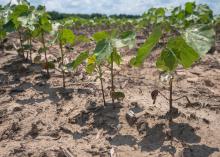Rainfall amounts, timing hamper cotton crop
STARKVILLE, Miss. -- Expect to see significantly less cotton than usual blooming in Mississippi later this year.
Row crop growers in the state had already indicated scaling back cotton acreage by 30% when they locked in their planting intentions for 2025, anticipating planting about 360,000 acres. That was before consistent rain through much of May -- the crop’s primary planting window in Mississippi -- kept planters out of fields.
The latest crop progress and condition report from the U.S. Department of Agriculture for the state shows only 54% of the crop had been planted as of June 2 compared to 89% by that time last year.
“Planting conditions for cotton this year have been possibly the worst I’ve ever seen,” said Brian Pieralisi, cotton specialist with the Mississippi State University Extension Service. “It’s hard to say how much is planted so far, but I can believe it’s less than half the intended acreage.”
Favorable weather in April allowed for early planting, but some acres planted in cotton became stunted by excess rainfall.
“It’s been tricky,” said Pieralisi. “Some regions had more planting windows than others. Most of the Delta was able to get intended acres planted. Some of the eastern and central Delta was wet, and the Black Prairie and northeast Mississippi have been wet most, if not all, of May.”
John Michael Blankenship, MSU Extension agriculture agent in Bolivar County, reported at least four farms there with prevented planting acreage and numerous waterlogged, unplanted fields. Prevented planting refers to financial protection provided to growers after a failure to plant an insured crop by its final planting date due to flooding or drought.
“You should have cotton planted or be at a good stopping point by the end of May for it to have enough time to develop,” Blankenship said. “We’ve had more than 10 inches of rain in the last two or three weeks, and that makes it impossible to get anything out in the field. Any relief we see now may be too little, too late for cotton, and growers planting late will have to plant what they can.”
Corn, soybeans, rice ‘coming on strong’
The majority of acreage for other row crops in Mississippi is in much better shape. Virtually all the state’s corn has been planted, with more than 70% in either good or excellent condition, according to the weekly USDA progress report. Those two categories also describe more than 60% of the rice crop, with none of it graded below fair. The crop was around 90% planted as of June 2.
“This year, our growers had their seed and planters ready, and there was a mad rush at the beginning of the season to plant as quickly as possible,” Blankenship said. “While cotton has been hung up for the most part, the growers that hit their target planting dates for other row crops are satisfied right now with how their crop is looking. Early planted corn is coming on strong.”
This also largely applies to soybeans -- the state’s most grown row crop and the one that can be planted latest in the year. That crop’s planting progress has just passed 80%, and 71% of what’s in the ground is in either good or excellent condition.
MSU Extension soybean specialist Justin Calhoun said while this year has been a tough one to lock in an accurate acreage estimate, he believed the final total would land close to the 2.25 million acres the USDA forecasted in March.
“Soybeans tend to be the most adaptable to plant date of any of our crops. We have optimum windows for maximum yield potential, but even if you fall before or after that optimum window, you’ll still make a decent crop if the conditions are right,” Calhoun said. “Other crops like corn or cotton tend to not be as adaptable. So, when we started to see major delays in planting, I began to wonder if some of the acres would shift from corn to soybean, and I think some may have, though there is still a lot of corn this year.”
Calhoun said there were areas of the state that were dry enough to capitalize on a very early planting window around the last few days of March that extended into nearly the first half of April.
“The soybeans in that window have benefited from the rains and look fantastic,” he said. “Since that second week of April, which is usually when the bulk of our planting gets going, the rain has been persistent across the state and has delayed planting quite a bit. The majority of the Delta region is planted, but it has all gone in sporadically during dry windows, and there are still a few acres out there still waiting to dry out to be planted.”
In the eastern portion of the state where rains have been much more consistent, very few dry windows have occurred, causing major delays in the planting progress.
“It’s no doubt that the majority of the 25% of the state’s acres that are left to plant are located on the eastern side,” Calhoun said.
Tariff uncertainty destabilizes row crop markets
Since U.S. President Donald Trump’s declaration in April to enact new reciprocal tariffs on imports -- including a tariff of 145% on imports from China -- he pulled back the tariff rate on China to 30% before agreeing to a 90-day truce. On May 28, a U.S. trade court blocked his tariff. The U.S. Court of Appeals for the Federal Circuit then granted a stay the next day, allowing for temporary reinstatement.
What effects the constantly developing situation will have on soybean exports is yet to be determined, said MSU Extension agricultural economist Will Maples. China imports more U.S. soybeans than any other country does, but the U.S. faces increasing competition from Brazil. Early June falls between Brazil’s crop being harvested and the U.S. soybean crop being fully planted.
The average soybeans futures price for the last week of May was $10.38 per bushel, a decrease of 15% from $11.95 the last week of May 2024.
“We will have to wait and see what kind of export sales the U.S. has this fall,” Maples said. “I believe there is some optimism that a trade deal with China can go into effect before the U.S. harvest that would be advantageous to our producers, but there is still a lot of uncertainty around trade policy and its effects.”
Average corn and cotton futures prices are also down from last May, though not as much as soybean futures. For the week of May 27-30, the average December corn futures price was $4.42 per bushel compared to the same time frame in 2024 of $4.76 – a decrease of 7.5%. For cotton, the December futures price fell nearly 14% from 77 cents a pound a year ago to 68 cents a pound to wrap up May 2025.
Maples said uncertainty regarding tariffs is reflected in the markets.
“We have seen some price swings with announcements, but it appears a lot of folks are in a wait-and-see situation for some concrete details to come out,” he said. “We are also entering into the part of the year where weather will be playing a bigger role in market prices. It has been a wet spring in some areas, and the market will start looking to see if there is a shift in corn to soybean acres.
“As we enter the summer months, weather will likely be the main price driver over the current tariff news unless some concrete details on future direction start to emerge,” Maples said.









